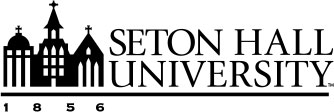
Frequently Asked Questions
"Unimarket" Questions
What is "eProcurement?"
Electronic procurement, generally known as eProcurement, is the automation and management of the procure-to-pay process. It involves creating and approving purchase requisitions, issuing purchase orders, receiving goods and services, and processing invoices electronically.
What is "Unimarket?"
Unimarket is the name of the company that Seton Hall has partnered with to implement
its eProcurement system. Unimarket is a cloud-based platform that streamlines eprocurement,
invoicing and supplier management. The Unimarket system is integrated with Banner
Finance, the university's financial system of record.
How do I log onto Unimarket?
Unimarket is available on PirateNet. Users can request access to Unimarket by contacting
[email protected].
What is the difference between a Browser and a Buyer and an Approver?
Browser: An employee authorized to shop in Unimarket and place items in their shopping cart but cannot complete the purchase / commit the funds. Browsers will reassign their shopping cart/purchase requisition to an appropriate Buyer.
Buyer: An employee authorized to shop and buy, to complete the purchase requisition and “check out.” Buyers have budget authority to complete the purchase. A Buyer cannot approve their own purchase.
Approver: An appropriate employee in the supervisory chain for their department who will receive notifications from Unimarket that a purchase requisition has been routed to their attention to approve or decline. The email notification will include the details of the purchase requisition and a direct link to the Approvals screen in Unimarket, making it easier and faster to attend to pending requisitions.
What is the difference between a Purchase Requisition vs. a Purchase Order?
Purchase Requisition: an internal document to request the acquisition of goods, materials, equipment,
supplies, etc. It is the first step in a structured procurement process, and it formally
documents the need for the purchase before the actual purchase occurs.A budget check
is performed automatically by the system at the time a purchase requisition is created
to ensure sufficient funds are available for the purchase.
Unlike a purchase order (which is sent to suppliers), a purchase requisition remains within the university and requires proper approval before moving forward in the buying workflow.
Purchase Order ("PO"): a formal order which is electronically sent to a supplier/vendor. Once a PO is accepted by the supplier/vendor, the PO becomes a legally binding contract.
What are the steps in the Procurement cycle powered by Unimarket?
An employee identifies a need and submits a Purchase Requisition.The Requisition goes through automatic budget check and then into an automated internal approval process.
Once approved, the purchasing department converts the Requisition into a Purchase Order.
The Purchase Order is sent to the supplier electronically. The supplier accepts the Purchase Order, creating a binding contract.
Goods or services are delivered according to the terms.
The invoice from the supplier is received electronically, approved by appropriate employee, and promptly paid by the Accounts Payable Department (typically by ACH, otherwise by check or credit card).
This sequence ensures internal control protocols are followed inclusive of appropriate purchasing authorization before financial commitments are made to external parties.
Can I use Unimarket to purchase a service?
Yes, use the Non-Catalog Item option to enter the full description of the services to be provided.
Does Unimarket check for budget availability as part of the purchasing process?
Yes, when a buyer clicks the checkout button or an approver tries to approve a requisition the system will:
a. Check that the index is valid and active
b. Check that you have purchasing authority for the selected index
c. Check the budget for the index
What is the Marketplace in Unimarket?
Marketplace serves as a digital shopping mall. It is not just one 'store' but a collection of different suppliers/business/sole source providers.
When Seton Hall issues an email invitation to a Supplier to join Unimarket, what information are they asked to provide?
Company information: Trade Name, Legal Name, Website URL, Category, Contact Info, Email, Physical Address, Remit-To Address
Tax Information: Electronic W-9
Do all Suppliers need to register with Unimarket?
Yes. All Suppliers must be added to Unimarket, either as a Registered Supplier or Lite Supplier. To conduct business with Seton Hall University, all Suppliers must have valid company and tax information on record.
How do I request a Supplier (submit a Supplier Request)?
Users with the Browser or Buyer role have the ability to request a New Supplier. When logged into Unimarket, go to the Marketplace module > select Purchasing > click Request Supplier. The Request a Supplier screen will populate > enter the required information marked with a red asterisk > click Send Request.
When a New Supplier Request is submitted, who gets notified when the Supplier is approved?
a. The request is reviewed by Procurement.
b. The requestor receives a notification once the supplier request is accepted.
c. Procurement then sends an invitation to the Supplier to register with Unimarket.
d. Once the Supplier has completed their registration, the Supplier becomes visible and useable in Unimarket.
Note: if the Supplier is not visible in Unimarket, they are not yet fully connected.
Why is the button labeled “Receive” instead of “Received”?
The "Receive" button allows users to acknowledge receipt of goods or services. Users must actively “receive” goods/services in Unimarket once they have arrived and have been verified. The system then updates the status to “Received.”
The “Receive All” button is confusing on the outstanding receiving page -what does it mean?
On the "outstanding" receiving page, the Receive All and Receive buttons allow users to either receive the entire order or receive a specific amount if the line(s) has/have multiple quantities. The Received header lets the user know what has been received already.
Why can’t managers see staff-submitted requisitions after approval?
Approvers can see their previous approvals. Navigate to Tasks -> View All -> Expand Filter section by clicking arrow -> change Pending to Approved. All approved requisitions will appear.
When are quotes/invoices or other documents required?
All standard requisitions must include a quote, invoice, spend analysis, or other
form of documentation.
For retrofit requisitions, only the invoice is required. Note: retrofit requisitions
will become the exception once the majority of suppliers with whom Seton Hall conducts
business are registered in the Marketplace.
Can Suppliers submit invoices electronically through Unimarket?
Yes!
Registered Suppliers can submit invoices directly through their Unimarket portal.
Alternatively, both Registered and Lite Suppliers can email invoices to:
📧 [email protected]
Be sure to reference the Unimarket PO number on the invoice.
Invoices are matched to the PO and to the receipt. When all three match (PO, receipt and invoice), payment is processed per supplier terms. If there is a discrepancy, Unimarket routes the exception to the Match Exception Queue and a task alert is generated.
How do I check the status of payments, specifically for Blanket PO drawdowns?
a. Open the Blanket PO
b. Go to the Release Order tab
c. Select the Unimarket PO
d. Open the Invoices tab to view payment statuses. In the header section, the Blanket
Order will reflect funds currently available.
We have invoices marked “approved” but not paid. Why?
Possible reasons:
Payment Terms – Payment begins processing based on the supplier’s agreed terms (e.g.,
Net 30).
Large Check Threshold – Any payment over $50,000 requires two signatories, which may
delay processing.
Retrofit Orders & Emergency Payments:
How do I process a retrofit invoice?
Retrofit orders are only to be processed when an invoice has been received but no PO has been generated:
a. Create a non-catalog requisition
b. Match the requisition to the invoice details
c. Scroll to the “Order Type – Standard” banner and select Retrofit Order
d. Attach the invoice in both the order attachment and justification sections
e. Click Checkout
Note: All purchases of goods/services/materials/equipment/services are to be "requistioned" in Unimarket first. Users enter a purchase requsition in Unimarket which will go through the internal online approval workflow resulting in a Purchase Order issued electronically to the Supplier. The Supplier will then fulfil the order. THEN an invoice is to be issued. Purchase Order first - then the Invoice.
In emergencies or other extenuating circumstances, the Retrofit Order processed described above can be used.
Can we still use Amazon, Staples, and other 'punchouts' that used to be in ESM?
Yes, those suppliers are now Punchout Suppliers in Unimarket.
The difference is that purchases now generate a Unimarket PO rather than a credit card transaction.
Where do we order business cards to ensure consistent design?
Continue to use the appropriate punchout supplier in Unimarket. Templates and designs should remain consistent as they are maintained by the supplier.
How do we instruct Suppliers to invoice Seton Hall through Unimarket?
The Supplier must be a Registered Supplier in Unimarket.
Once registered, Suppliers can:
- View the transaction in their portal
- Select the transaction to create an invoice
- Attach the invoice document
- Submit the invoice for processing via AP
How do we confirm that a Supplier has received the PO?
a. Open the Unimarket PO
b. In the header section, locate “Documents”
c. Click the Purchase Order hyperlink
This is the actual document sent to the Supplier.
⚠️ Important: The vendor must have a valid email address in their Unimarket profile to receive orders.
SHU Credit Card Questions
Which office should I contact if I have a question about my University-issued credit
card?
Contact Card Compliance @ [email protected] or visit the Credit Card Program webpage.
How do I request a Seton Hall University credit card?
Any employee requesting a credit card is required to complete an application available
at University-Procurement-Credit-Card-Request-Form.pdf. If approved by the employee's supervisor, Card Compliance will review and determine
whether the employee has established the requisite business need for a credit card
and the appropriate spending limits. Submit completed applications to [email protected].
How do I request an increase in to the single transaction and/or monthly spend limit
assigned to my University credit card?
Requests for an adjustment of a spend limit should be submitted to Card Compliance
@ [email protected]. Requests will be evaluated on a case-by-case basis.
What is considered a proper business purpose?
A proper business purpose as deemed by the IRS answers the following questions pertaining
to the expense:
Who received the benefit of the expense list? (List all who did).
What was the purpose of the expense? (Why was the expense needed?)
Where did the expense take place?
When did the expense take place?
Other Procurement Questions
When do I need to obtain competitive bids?
As per University Policy on Competitive Bidding, all acquisitions of goods or services (with or without a contract or lease) that
total over $10,000 require at least two (2) bids. It is recommended that for orders
over $25,000, three (3) to five (5) bids are recommended but at least two (2) bids
are required.
Can Procurement create / change an address in Banner Finance (university's financial system of record) for an employee or student?
No. Employees and Students can update their address online via Self Service Banner (look for View/Update Personal Information on the Student Dashboard or Employee Dashboard as appropriate).

